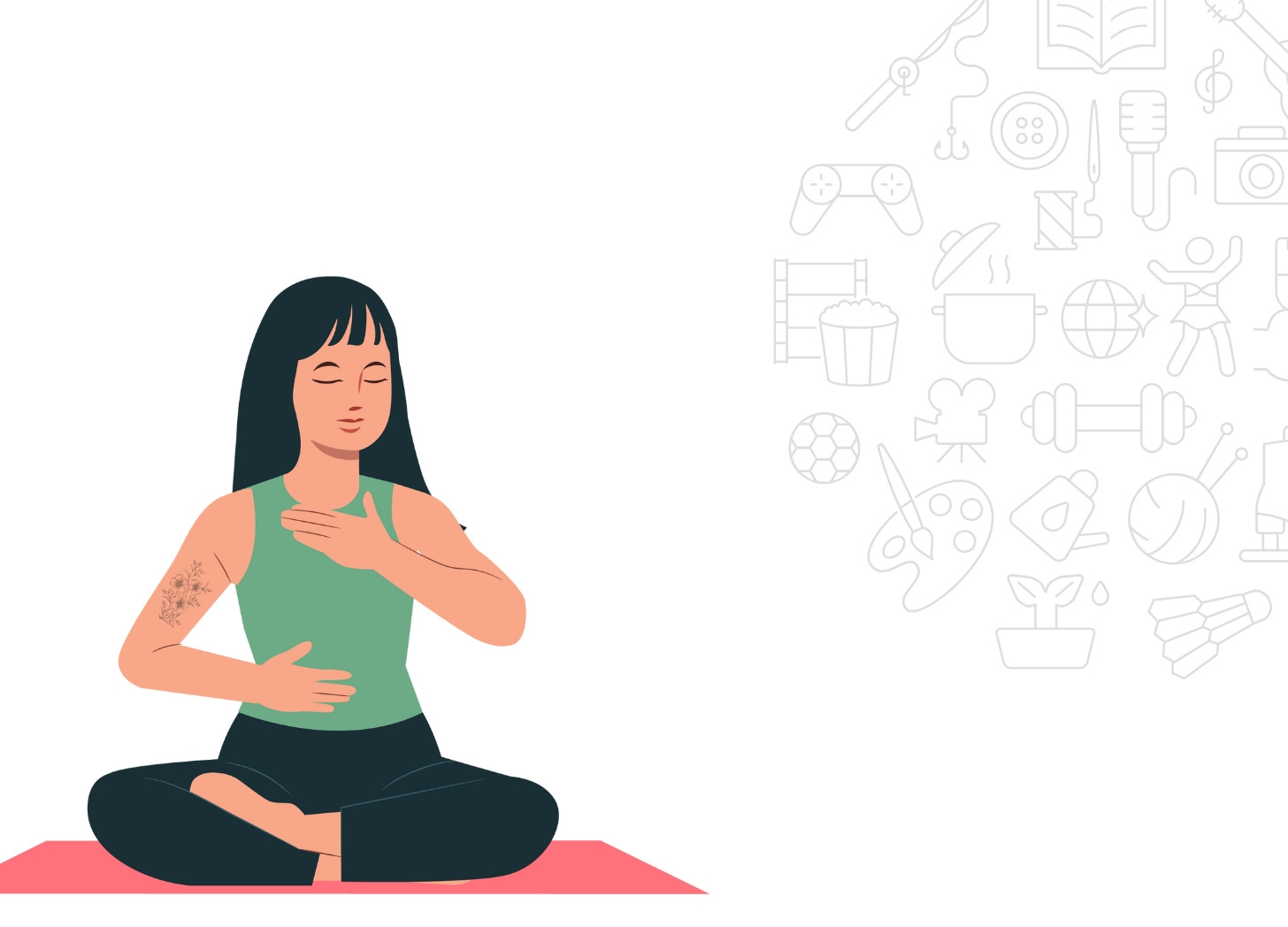Boost your well-being with resonance breathing
Improve your physical and emotional health at no cost!
Resonance breathing, or coherent breathing, is a technique that involves breathing at a specific pace to stimulate the parasympathetic nervous system, reducing stress and promoting relaxation. This optimal breathing frequency helps improve heart rate variability (HRV), positively impacting physical and emotional health.
How to practice resonance breathing
Find a comfortable position: Sit or lie in a quiet space without being disturbed.
Inhale slowly through the nose: Breathe in gently for a count of about 5 seconds.
Exhale slowly through the mouth: Breathe out evenly for about 5 seconds.
Repeat the cycle: Continue this 5-second inhalation and 5-second exhalation cycle for a few minutes. Adjust the timing slightly based on what feels comfortable, aiming for 5-7 breaths per minute.
Benefits
Reduces stress and anxiety: By slowing down the breath, resonance breathing activates the body’s relaxation response.
Improves heart rate variability (HRV): Higher HRV is associated with better overall health and emotional resilience.
Promotes better sleep: Resonance breathing helps calm the mind, making falling and staying asleep easier.
Enhances focus and mental clarity: This technique increases oxygen flow to the brain, improving cognitive function and focus.
Supports emotional regulation: Resonance breathing can improve mood and emotional stability by reducing the physical symptoms of stress.
Practical Tips
Practice resonance breathing for 3 to 5 minutes early in the morning and just before going to bed. This will help you remember the calm state later in the day.
Practice resonance breathing for 1 minute before your meetings. It’s a great way to clear up the fog of thoughts and enter the next conversation with a fresh mind.
When feeling overwhelmed or anxious, use resonance breathing to quickly return to a centered state. Your thoughts slow down with just one minute of resonance breathing.


